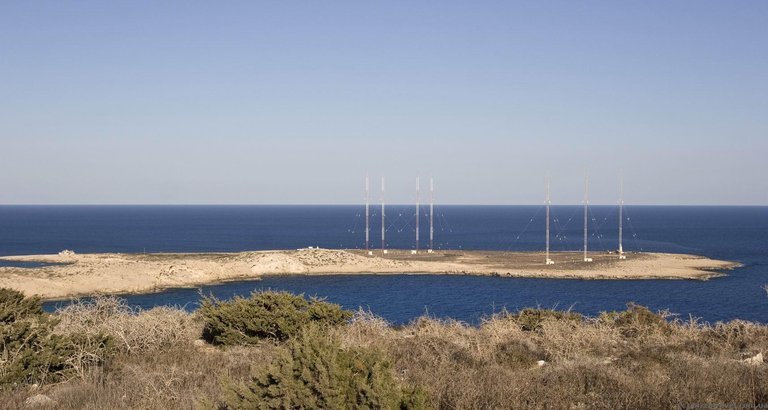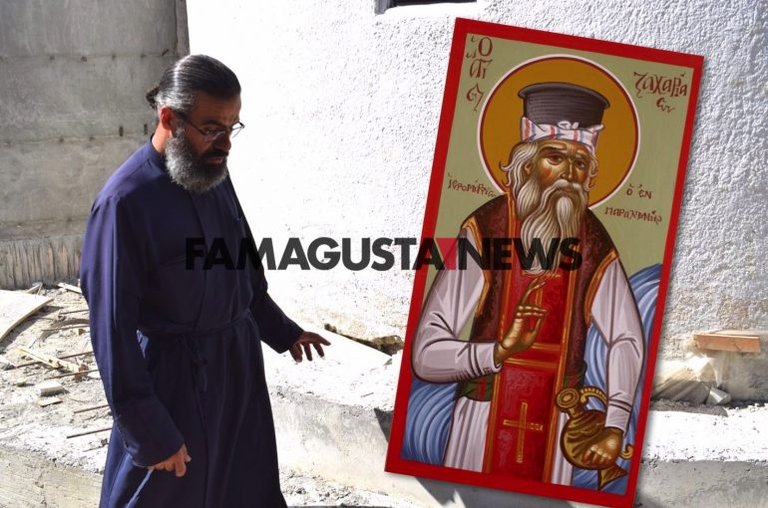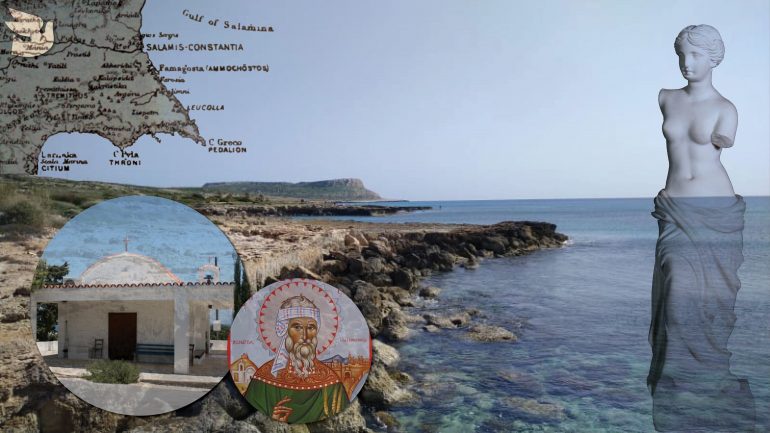Important decisions were made on Friday, February 26, which will upgrade the archaeological map of the area of Kokkinochoria and the province of Famagusta. Specifically, after a visit by the Minister of Transport, Communications & Works Giannis Karousou and the Director of the Department of Antiquities, Dr. Marina Solomidou-Ieronymidou in Paralimni and Ayia Napa, it was decided to proceed with an archaeological survey of the area of Aphrodite.
Read the report of Lambros Kaoullas as it is newspaper Simerini
They are looking for the "Extreme Aphrodite"
The issue was discussed in an almost two-hour meeting at the Museum "Sea" of Ayia Napa, which was attended by the Ministry of Foreign Affairs, the Director and Officers of the Department of Antiquities and the Mayor of Ayia Napa. The meeting discussed the issue of Aphrodite of Cape Greco and presented the data that testify to the existence of a temple of the ancient goddess in the area.
For the existence of the temple of Aphrodite in Cape Greco, the Minister referred to the ancient Geographer Strabo: "There are so many written reports from both researchers and Strabo, around the 1st century, and the decision is that the Department of Antiquities, in collaboration with the Municipality of Ayia Napa, will go ahead and make an archaeological review despite the fact that there were and there are these written reports no archaeological review has been done to date for this purpose. Therefore, the next step will be to proceed with the implementation of this decision in the coming weeks and we will wait for the results of this review ".
As Mr. Karousos clarified, "First, an archaeological review will be carried out and, depending on the results, the relevant decisions will be made. We will open this topic step by step. As I have mentioned, there are reports from both Strabo and other researchers and archaeologists and there are publications on this subject but to date there has never been an archaeological review of this and we will proceed to find out what is there. today and where it is and to make the appropriate decisions. This is Aphrodite the "Extreme", as it is called, which existed in the coastal areas of Cyprus. "
Asked about antiquities from the area that exist in museums abroad or in other collections, Mr. Karousos said that the "The Department of Antiquities always makes efforts to repatriate any antiquities that are abroad. It is a continuous effort and we are conducting the well-known "cultural diplomacy" where it is known that all over the world we are watching what is happening, where the Cypriot antiquities exist and we are doing everything possible to repatriate them ".
The issue of "Aphrodite of the Limbs" was raised by "Today" (31/01/2021) in the context of a large research around the 7 mysterious French and American radio antennas in Cape Greco.

In his "Geographical" Strabo writes about the area that starts from the place where the enslaved monastery of Apostle Andreas is located today (near which he mentions a temple “Ἄδυτον γυναιξὶ καὶ ἀόρατον” of Aphrodite Extreme): “Πρόκεινται δὲ πλησίον αἱ Κλεῖδες καὶ ἄλλαι δὲ πλείους, εἶθ᾽ αἱ Καρπασίαι νῆσοι, καὶ μετὰ ταῦτα ἡ Σαλαμίς, ὅθεν ἦν Ἄριστος ὁ συγγραφεύς: εἶτ᾽ Ἀρσινόη πόλις καὶ λιμήν: εἶτ: ἄλ᾽ν: τραχὺς ὑψηλὸς τραπεζοειδής, ἱερὸς Ἀφροδίτης, εἰς ὃν ἀπὸ Κλειδῶν στάδιοι ἑξακόσιοι ὀγδοήκοντα: εἶτα κολπώδης καὶ τραχὺς παράπλους ὁ πλείων εἰς Κίτιον… στότε δὲ λιμένα.
Regarding the departure of the antennas, Mr. Karousos stated that the area where there is evidence that Aphrodite existed does not seem to be directly related to the fenced area of the antennas, but perhaps after the archaeological review could be done in this the point "If and when there is some evidence, some reports that there may be something at this point."
Regarding the fund that will be needed, the Minister said that "The budget for this issue is not large. It is within the budget of the Department of Antiquities. The Municipality of Ayia Napa has stated that it will contribute with what the Municipality can provide. Therefore, the first step will be this archaeological review and then, depending on the results, the relevant decisions will be taken. "
Support to the Municipality of Ayia Napa
The Mayor of Ayia Napa, Christos Zannettou, thanked the Minister for his initiatives and for the promotion of the issue for an archeological review regarding the goddess Aphrodite. Leaving the meeting he said that "The conclusions are that together we will proceed with any work required to be able to discover what is identified with this story which is associated with the Municipality of Ayia Napa."
There is a mutual will, stressed the Mayor, to proceed with all the processes and reviews required "So that this is also a point of reference which concerns the Municipality of Ayia Napa, which surely, we all know, there are several ancient monuments, some of which we have highlighted and what comes to our knowledge we will try to make proper use of the the rest ”.
Panagiotissa Chapel and Panagia Napa Monastery
The Director of the Department of Antiquities, Dr. Marina Solomidou-Ieronymidou, spoke about a very important discovery, referring to the findings during the renovation of the chapel of Panagia Panagiotissa in Protaras.
As part of today's tour of YMEE Giannis Karousos in free Famagusta, the Director of the Department of Antiquities visited with him the chapel to inspect the works and a meeting was held with the Metropolitan of Constantia-Famagusta Vassilios and the Mayor of Paralimni Theallos.
As stated by the Director of the Department of Antiquities at Famagusta.News, this important discovery in Paralimni refers to an inscription that refers to the family of the last king of Salamis Nikokreontas as well as to Aphrodite "Extreme", as it is called.
The Department of Antiquities was notified after the works for the renovation of the chapel began. In the course, he said, it developed into an excavation which yielded very important findings which show that it is an Early Christian Basilica of the 6th-7th century of the time of the Emperor Heraklion. Unfortunately, as he mentioned, only the southern and central closed parts of the temple have been found, because the southern one seems to have been destroyed. The findings, as he said, are also very important and from the wealth of findings, it seems that it would be a very remarkable early Christian basilica which is currently registered by the Department of Antiquities for protection from the works of the chapel and will return to the surface as soon as The works will be completed and will be upgraded, all the findings will be evaluated and the purpose of the Department of Antiquities is to build a protective shelter so that the early Christian basilica coexists with the new church that is now being built.
As he said, there are important findings of Neolithic and Paleolithic era in the area which it is time to highlight with excavations and strategic planning that will connect the areas with each other. He made special reference to the area of Paralimni Islands and the findings of small hippos and elephants in Ayia Napa. "The area has wealth that unfortunately for years very few have emerged, we knew but very little we had highlighted and now the time has come", stated.

It is recalled that in Panagiotissa were also found the bones of Father-Zacharias who was beheaded by the Turks in the 17th century.
Referring to the monastery of Ayia Napa, the Director of the Department of Antiquities said that important findings were identified during the upgrade of the monastery, which will be turned into a Museum. The monastery, he said, has been known since the Renaissance and older phases of the monastery continue to come to light with important burials and movable and immovable finds. "It is another pebble in the varied history of our place", he said.
Bounding the archeological map of free Famagusta
Asked by Dr. Solomidou-Ieronymidou on how the free area of Famagusta is placed on the archeological map of Cyprus answered that "The area of Famagusta is very rich in archaeological finds". Regarding this case, he stated that “we have written testimonies as pointed out by both the Minister and the Mayor, which of course must be verified by archaeological research. This archaeological research must proceed gradually. It does not necessarily mean an immediate excavation, it must be preceded by an archaeological review. This is the right process to see what exists and to proceed accordingly, if we will proceed to archaeological research. "
He specifically stated:
"The first reference was made by Strabo, an ancient Greek Geographer of the end of the 1st century BC to the beginning of the 1st century AD who refers to the specific Cape Rudon and this Sanctuary of Aphrodite Akraia. Then we have Cesnola, who had come at the end of the 19th century and excavated, as he excavated, he was not an archaeologist, I mean, in 1877 and he refers to this issue and in fact to a head of a statue, to the goddess Kyveli. This head is currently in a museum in Berlin. Then we have Max Ohnefalsch-Richter who also passed by our island who comes a little to challenge Cesnola, who stated that he comes from the area of ancient Salamis. But Ohnefalsch-Richter denies it and says it is from the area of ancient Leucollas which is an area here. So, written testimonies exist, the material is rich in written sources. But, I repeat, it must be verified. We do not know what has been saved because so many years have passed, we have some evidence around the 1960s, that there was something in the area in ancient architectural remains and we will try now, in the coming weeks, very soon to do this archeological review to see how we will go ahead and go with the right right, gradual, strategic planning. ”
Source: TODAY / Lambros Kaoullas
